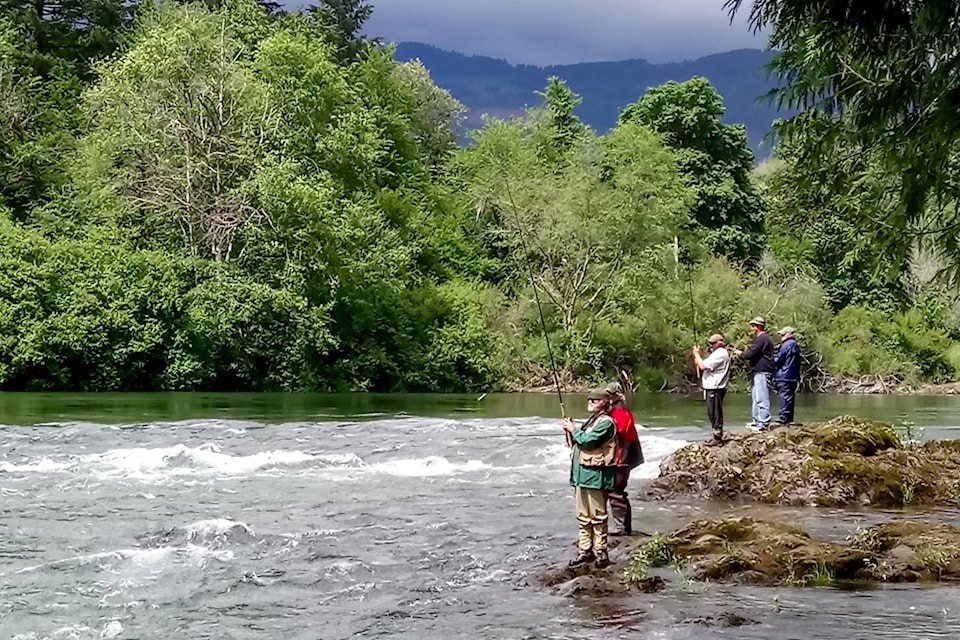BY MIKE YOUDS
Special to the News
Odds are that a harvest roundtable will officially close the Somass River to sockeye fishing this week after a second disappointing season in a row.
Tsu-ma-uss (Tseshaht and Hupacasath) fishermen voluntarily pulled their nets in the first week of July, responding to concerns about low sockeye escapement to Great Central Lake.
About half of the projected sockeye escapement has been counted, roughly 120,000 fish, well short of the 350,000 forecast, said Ryan O’Connell, resource manager with Fisheries and Oceans Canada.
“The First Nations fishing has closed down other than a bit of dip netting in Sproat River,” said O’Connell, who is responsible for management area 23, Alberni Inlet-Barkley Sound.
There remains a possibility that more sockeye may enter the river, in which case the roundtable, comprised of fishery stakeholders, will choose to reopen the river fisheries.
In the meantime, a marine hook-and-line recreational fishery remains open south of Polly Point. The roundtable reasons that the recreational fishery — with a projected catch of 500 fish including 100 from Great Central — has a much lesser impact on overall escapement.
“This is the roundtable trying to balance economic and environmental concerns,” O’Connell said.
This season was expected to be an improvement over 2017 returns. The fishery was prematurely closed then reopened last summer amid escapement concerns resulting from extremely high temperatures in the river. That’s not an issue this year. Instead, stock assessment has been tricky.
“It’s been a weird year,” said Andrew Olson, fisheries manager and biologist with Tseshaht First Nation. “The run timing seems to be a bit different.”
At this point, they’re being more cautious than optimistic in predicting the remaining return to Great Central Lake. Olson said they will know more on Thursday when the latest stock assessment is released. The roundtable will use the data to inform its decision.
“It’s definitely a disappointment for the membership, no doubt about it,” Olson said of the communal river fishery. “It’s not what they were hoping for.”
They had hoped for a rebound season, especially after returning two-year-old jacks were plentiful, indicating a larger return would be arriving after four years. That never materialized, though.
O’Connell said DFO doesn’t know what is affecting the productivity of Great Central Lake although water temperature may be the culprit.
“Temperatures are definitely a theory. The fish in Great Central Lake have a longer river to travel.”
At this point, however, he doesn’t think it’s an ongoing issue. Much higher sockeye escapements are forecast over the next couple of seasons.
There has been no First Nations commercial fishery in the river this season since no commercial agreement was in place. For the past half-dozen years, such agreements have allowed for the sale of sockeye catches to fish processors. Negotiating for better terms, the community voted against signing the proposed agreement earlier in the year.
“It probably has absolutely affected the bottom line for Tseshaht fishermen,” Olson said.
About one-third of Tseshaht catch is sold by street vendors while two-thirds goes to processors if a commercial agreement is in place. Fishermen hope that they can compensate for the poor catch through a chinook fishery later in the summer, Olson said.
